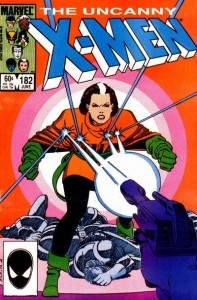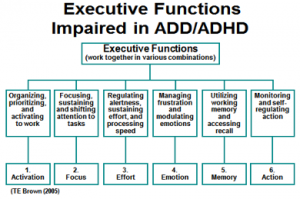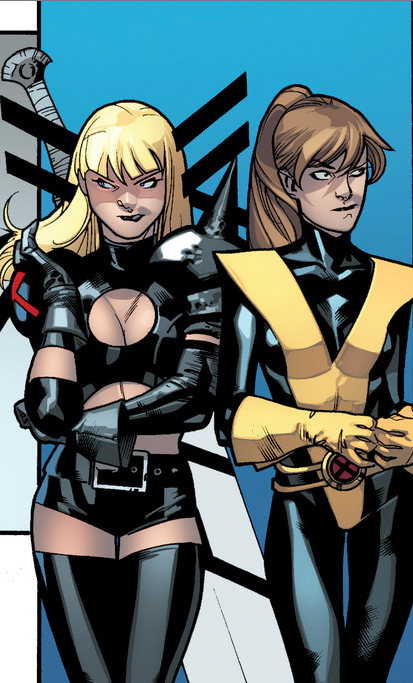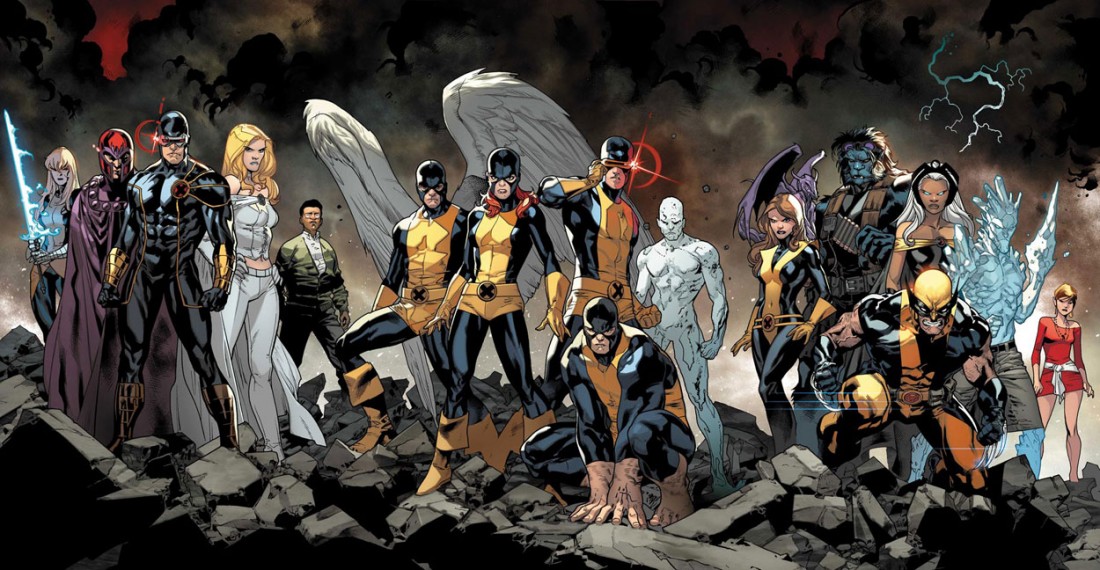Disorder or superhero?
How do you talk to yourself about yourself?
Out in the world, you might be someone with a disorder. But what do you tell yourself about your brain and who you are? How do we navigate a world in which it’s sometimes useful and necessary to think our ourselves as having a disorder — and then drop that label when it’s not empowering?
I was lucky in some ways because I got labeled “gifted” when I was a kid. Some of my ADHD behaviors were (accurately) attributed to the fact that I was bored in school. But being a gifted kid didn’t explain why I was being bullied or why I struggled with simple tasks. It was a good label for making me feel powerful but it was a poor map for navigating the reality of my life.
Would “ADHD” have been a better map and label? Maybe, but it comes with a big downside. Studies are beginning to show that when kids identify with the ADHD label, they perform more poorly on academic tasks. Jerome Schultz writes, “I believe that when a student does not understand his or her condition (in other words, his or her label), this can lead to a self-assigned label: ‘I have ADHD. I can’t focus well enough to do math. I’m stupid.’ This is more disabling than the terms ADHD or LD.” (From “Why Stress at School is Toxic to Kids with ADHD or LD.”)
We need maps that both empower us and help us navigate the world we’re in.
I’m a superhero!
 The first useful map I found for thinking about my brain came from Marvel Comics. If you’ve read X-Men, New Mutants or other similar titles, you know that mutants in the Marvel universe are evolved humans with superpowers and often superweaknesses. Rogue can copy powers from other people, but she can’t make skin contact with anyone. (Great metaphor for a sensory processing disorder?) Cyclops can shoot lasers out of his eyes, but he can’t stop doing it, so he’s got to wear special glasses or keep his eyes closed.
The first useful map I found for thinking about my brain came from Marvel Comics. If you’ve read X-Men, New Mutants or other similar titles, you know that mutants in the Marvel universe are evolved humans with superpowers and often superweaknesses. Rogue can copy powers from other people, but she can’t make skin contact with anyone. (Great metaphor for a sensory processing disorder?) Cyclops can shoot lasers out of his eyes, but he can’t stop doing it, so he’s got to wear special glasses or keep his eyes closed.
As a pre-teen and teen I needed this idea: that some people are extraordinarily powerful in certain circumstances and profoundly weakened in others. That sometimes your superpower is your superweakness because you can’t turn off your laser eyes or your wildly creative brain.
Thinking about myself as a superhero with powers and weaknesses was a huge upgrade from the previous map for my life in which I was starting to think that despite being gifted, there might be something seriously wrong with me, that I was broken in some way.
Remember: the map is not the territory
Parts of modern American culture are weirdly literal. This often results in people thinking there is an accurate map they can use, that there’s only one truth. This doesn’t serve people with diverse brains. The idea that you’re going to find the one true, accurate map isn’t particularly functional.
What actually causes ADHD? (And other disorders for that matter?) We don’t know. There are correlations suggesting that ADHD likely includes:
- Genes
- Epigenetics
- Diet
- Environment
- Culture
In my case, my sciency map for my brain goes something like this: I inherited the genes to be wildly creative and highly sensitive, but I was born into a culture with a school system that enforces conformity. Plus my environment contained a lot of toxins I was exposed to at a young age. Stress and toxins pushed my brain/genes in a direction that created some patterns that are problematic in the context of my culture. But I’m also creative and smart, and in the right environment I thrive and make a difference.
Is that true? Well, it’s true-ish. It’s a map that brings in a lot of current science, but it’s not the kind of map that gets me excited to do my work. And, like any map, it’s not the territory — not the lived experience of my daily life.
The best maps are the ones that help us powerfully navigate through our daily lives and reach our goals.
What I won’t tell myself
One reason it’s crucial to understand that no map is completely true is that you’ll run into maps that make you feel bad. I’ve been trying to read Taking Charge of Adult ADHD by Russel Barkley, PhD, and I keep stopping because he includes in his definition of ADHD, “poor self-control.”
That’s an accurate thing to say, but for me it’s not useful. Thinking of myself as a person who has poor self-control feels detrimental and too close to the many times I’ve been criticized for being “lazy.” It has me feeling like I’m broken without the upside of also being different in a good way. And it prioritizes control over abilities like creativity and innovation.
I think it’s important for kids and adults to realize that there are going to be ideas we come across that don’t work for us. It doesn’t matter if the person telling you that idea or map is someone with authority, you don’t have to work inside of their map. Find a doctor or therapist who uses a map that feels powerful for you.*
I have enough trouble with parts of my day-to-day landscape, I’m not going to put a bad map on top of it.
Favorite map #1: Superhero Hunter Inventor
You can use any superhero as your model if you like superheroes, but if you want something more sciency, check out Thom Hartmann’s ADHD and the Edison Gene.
I first read Hartmann’s books in my late 20s when I was diagnosed and I’m deeply grateful for that introduction to ADHD. Back then Hartmann’s map was that ADHD brains are genetic strains that hold true to humanity’s hunter/gatherer past. Hunters need to be always scanning their environment, be easily distractible and then hyperfocus on prey, and be risk-takers.
In the Edison Gene book, Hartmann has updated his science significantly and adds the map of ADHD brains as being inventors like Thomas Edison (who very likely had ADHD). It’s a great map for having us ADHD folks feel powerful and necessary.
I use both inventor and hunter when I think about myself and sometimes combine them as “hunter of ideas.” (My co-workers will tell you that this describes me very accurately.)
I also like to redefine the acronym ADHD as: Adapted Driven Hunter Dreamer. This helps a ton in environments were it’s useful for me to talk about having ADHD (like this blog or when I’m talking to parents of ADHD kids) but where I don’t want to have to keep thinking of myself as a disordered person.
Favorite map #2: FAST MINDS / Strengths
The beauty of this map is that it doesn’t spend much time on explanation. It just says: there are brains that behave like this and if you’ve got one, here’s some stuff that’ll make you happier and more powerful in your life.
I think it’s important to realize we don’t need an explanation. We can simply say, “My brain works this way and I’m asking for your help, will you help me?” It also opens up a great conversation for people without official diagnoses. I can still ask how your brain works and how you want me to work with you.
I’m very fortunate that I’ve worked in a strengths-based workplace for almost nine years now. (Definitely the longest I’ve ever spent at the same job.) We’ve all taken the Strengths Finder from the Gallop organization. It’s a wonderful tool for bridging differences and creating teams. The tool describes 34 areas of strength that people have and gives you your top five. (It’s $15 to take the test online, or you can buy one of their many books and get the test for free.)
One of my top strengths is Ideation: “An idea is a connection. Yours is the kind of mind that is always looking for connections … You revel in taking the world we all know and turning it around so we can view it from a strange but strangely enlightening angle. You love all these ideas because they are profound, because they are novel, because they are clarifying, because they are contrary, because they are bizarre.”
A strength I lack is Achiever, i.e. getting things done. But one of my bosses is an Achiever. The strengths context lets the two of us work together and create ways to get things done without anyone having to be wrong or disordered. For example, she often sends me emails with subject lines like: “Could you think about this?” or “I need a few quick ideas” rather than, “When can you get this done?”
The other great aspect of knowing your strengths or the way your FAST MIND works is that it can help you translate what you’re trying to do into a format that works for you. I can see that my FAST MIND needs me to break projects down into much smaller pieces than other people might (often as small as “open the file”). Or I can see that if I can turn a set of tasks into a collection of ideas, I’ll be more excited to do them.
Favorite map #3: Smart But Stuck
 This map comes from Thomas Brown’s book Smart But Stuck. You can also see his model of ADHD on his website. He describes ADHD as an impairment of executive function that impacts six areas: activation, focus, effort, emotion, memory, action.
This map comes from Thomas Brown’s book Smart But Stuck. You can also see his model of ADHD on his website. He describes ADHD as an impairment of executive function that impacts six areas: activation, focus, effort, emotion, memory, action.
I find his map extremely effective for helping me understand how to work with emotional information and my working memory. Working memory determines how many things you can hold in mind at a given time — and your ability to keep them in mind. For example, when I’m trying to leave the house and I lose my keys twice as I’m putting on my coat and boots, that’s an issue with my working memory. The information about where I’d just put my keys (my sweatshirt pocket) fell out of my working memory while I put my jacket on. By using this map, I can laugh about that instead of worrying that there’s something wrong with me.
This map of ADHD is the one closest to a disorder map that I use on a regular basis. It gives me a way to talk about things that are very hard for me to do that a non-ADHD person could do easily. I don’t have to sound like my whole brain is mess to describe a specific issue I have with executive function, working memory or emotional dysregulation.
Use as many maps as work for you
I use all of those maps in different situations. Right now, sitting at my desk and typing a blog with loud music on my headphones, I’m in the superhero map. It’s easier for me to talk about weaknesses as a superhero. And it gives me a lot of motivation!
This afternoon I have a bunch of client work and I’ll probably be thinking of myself as the hunter — out in the forest searching for and bringing down the right ideas to feed my tribe.
In close relationships, I tend to use Strengths or FAST MINDS so that we can talk about our different brains and how to help each other. I don’t need an explanation for my brain in order to say, “Hey, did I just walk out of the room while you were talking again? I’m sorry. What were you saying?” or “I know you’re Analytical, do you need me to present this in a more linear way?”
I use the Smart But Stuck model when I’m working on the systems that keep me organized and regulated.
How do you know which maps to use?
What makes you feel good? What gets you to your goals?
That’s it.
It’s easy to test out maps. Put one in place and check in with yourself after a few days or a few weeks. Did you reach more goals than before you started using that map? Did you feel good doing it? If yes, add that to your map box. If not, try another one.
The maps we use to explain our experiences to ourselves create future experience. They can be self-reinforcing for good or bad.
Don’t be afraid to play with the ways you explain your experiences to yourself. Inside your own mind, you can thinking about the world any way you want. I’m still the superpowered mutant I was as a teen. Who are you?

If you’re curious, I’m not really Rogue, she was just a good example. I’m a cross between Magik and Kitty Pryde.
—
*Big disclaimer: I am an author, not a therapist or doctor. Sometimes in long-term, beneficial relationships with therapists and doctors we might get advice we don’t like. That’s different from trying to operate in a bad map. Please do not take my advice over that of your doctor or therapist.



Karin Kallmaker
January 29, 2016 at 7:36 pmWhat thought-provoking and context-setting blog about a topic that is not talked about enough. Especially combined with your earlier blog! Thank you for your candor and careful analysis.